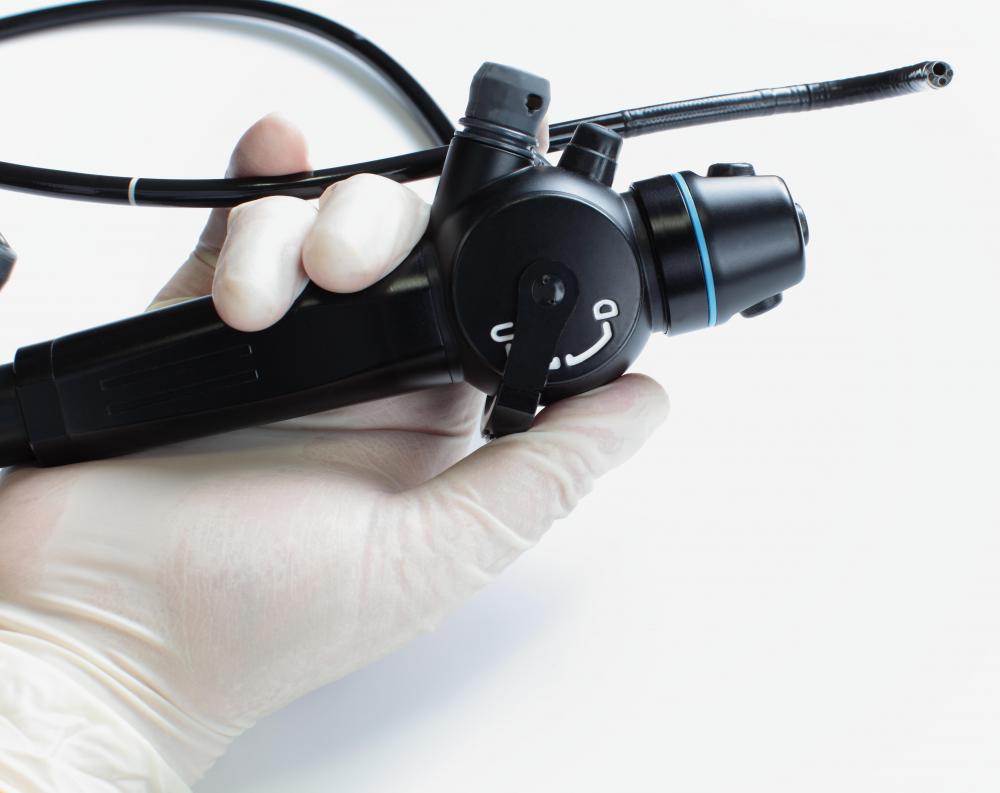At WiseGEEK, we're committed to delivering accurate, trustworthy information. Our expert-authored content is rigorously fact-checked and sourced from credible authorities. Discover how we uphold the highest standards in providing you with reliable knowledge.
What is a Ileostomy Stoma?
An ileostomy stoma is an artificial opening that is surgically created to ease the burden placed on an individual’s rectum or colon in the presence of injury, disease, or defect. Unlike a colostomy, which involves rerouting the large intestine through the abdomen, an ileostomy positions part of the lower portion of the small intestine within the abdominal wall following the removal of a portion of colonic tissue and one’s rectum. As with any invasive medical procedure, surgery to position an ileostomy stoma does carry significant risks, and these should be discussed with a qualified health care provider prior to scheduling surgery.
Essentially, the large intestine houses accumulated fluids and waste until they may be expelled from the body as fecal matter. In cases of inflammation or hypersensitive immunity, such as with inflammatory bowel disease, intestinal function can become partially or completely blocked, compromising its overall ability to function normally. Any disruption in intestinal function can also place the body at risk for serious infection.

In the presence of impaired large intestinal function, a portion of the small intestine may be rerouted to ease the stress placed on the lower bowel. Severe inflammation and blockage can impede the body's ability to usher food particles and liquids through the lower bowel, or large intestine. Repositioning the lower portion of the small intestine to bypass the obstacle serves to offer some relief and an opportunity for the large intestine to heal.

A stoma is an artificial opening created using existing tissues within the body; though rare, artificial material may also be used. The moniker ileostomy is derived from the portion of small intestine directly involved with this form of stoma placement — the ileum. Performed under general anesthesia, the procedure involves the repositioning of the lower part of the small intestine, or ileum, through the stoma placed in the abdominal wall to ease the expulsion of waste from one’s system. Once the intestinal tissue is pulled through the stoma, sutures are used to hold it in place, a container is positioned over the stoma to collect expelled waste, and the remaining incision is then closed with sutures.

Individuals generally undergo ileostomy surgery to alleviate symptoms and complications associated with a chronic medical condition, such as Crohn’s disease or certain cancers. The presence of congenital defects that impair intestinal function may also necessitate an ileostomy stoma placement to ease symptoms and the possibility for further complications. Individuals who have sustained an intestinal injury may also undergo ileostomy surgery for temporary ileostomy stoma placement.

Short-term placement is generally used when infection and certain injuries directly affect the large intestine and bowel. Once the initial infection is alleviated or injury has healed, a second surgery is required to relocate and attach the small intestine to its natural, anatomical position. Long-term ileostomy stoma placement is usually reserved for situations where intestinal function is severely and irreversibly compromised, large portions of intestinal tissue have been removed, or in anticipation of the positioning of a permanent J-pouch.

Prior to surgery, individuals undergo a consultation during which time they are provided with specific pre- and post-operative instructions. Individuals are usually instructed to discontinue the use of any medications that may interfere with blood clotting at least two weeks prior to surgery. Following the procedure, individuals generally remain hospitalized for up to one week, depending on the progression of their healing. During recovery, individuals will usually be instructed on how to properly care for their stoma to promote a full recovery with minimal to no complications.

Ileostomy stoma placement does carry significant risks for complications, including dehydration, abdominal bleeding, and intestinal blockage resulting from scar tissue formation. In the presence of inadequate or inappropriate aftercare, individuals may be at an increased risk for wound rupture and infection. The administration of general anesthetic medications also carries a significant risk for respiratory difficulty, heart attack and stroke in certain individuals.
AS FEATURED ON:
AS FEATURED ON:

















Discuss this Article
Post your comments